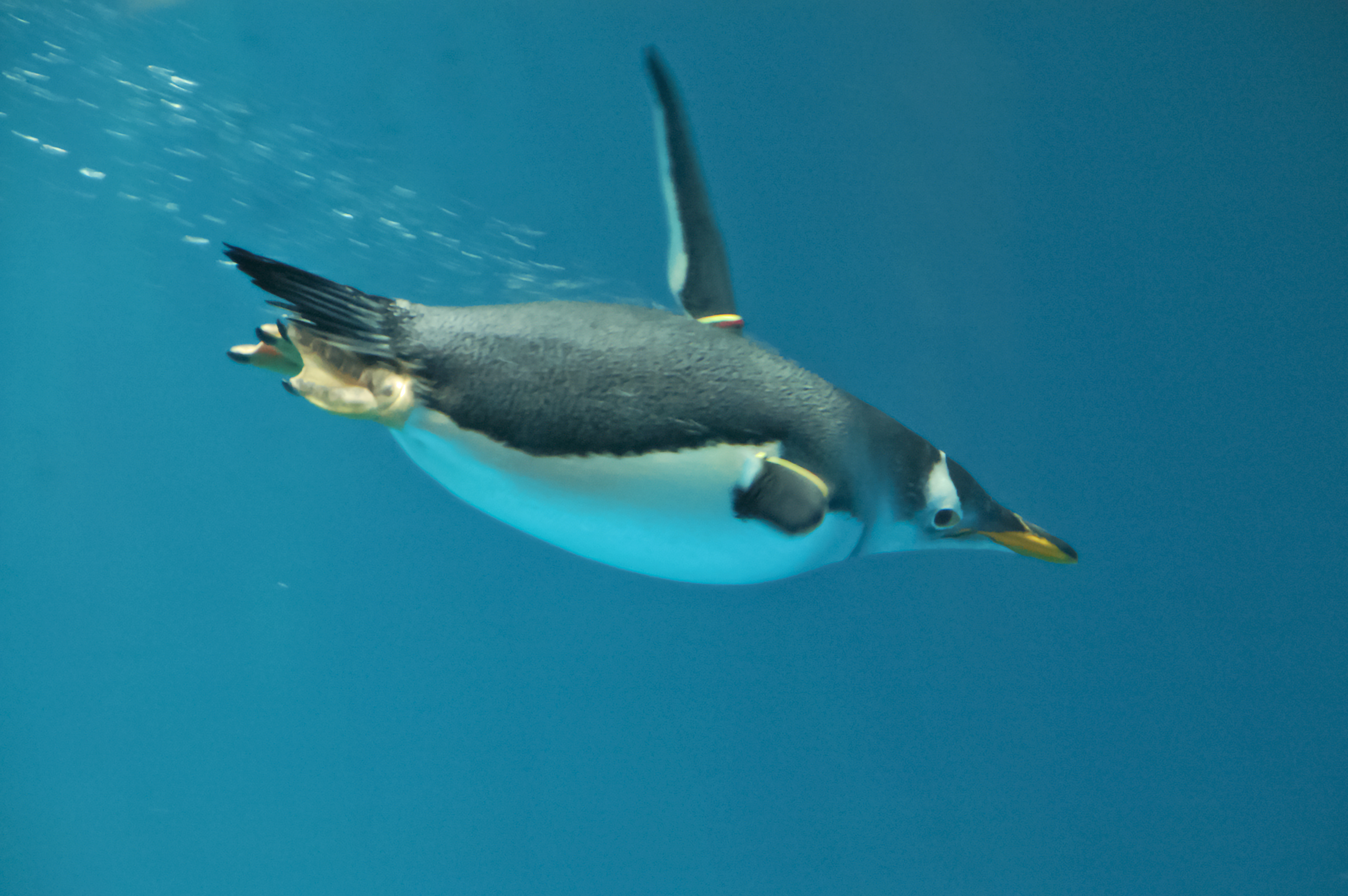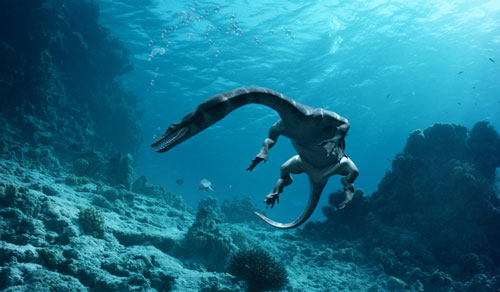 |
| Some creatures, such as penguins, employ a figure of eight motion as a mean of propulsion |
The overall motion is actually a figure of eight and is a remarkably efficient means of locomotion. Penguins in particular use it, and while hummingbirds are not marine, they also use a figure of eight pattern to hover expertly at the openings of flowers. All demonstrate the versatility of the motion.
Modern marine reptiles, like turtles, also use a figure of eight swimming pattern and so it was naturally assumed that ancient marine reptiles, like the mosasaurs, plesiosaurs and pliosaurs, used it as well. Some palaeontologists, however, championed a different means of propulsion, specifically a rowing motion. By pulling themselves forward with their paddles and then rotating them 90 degrees through the join axis, these ancient reptiles would have been able to sweep forward with no water resistance. This process would have been repeated over and over again, like the movements of a sculler's blades, to power through the water.
 |
| A section of the trackways from Yunnan. The maker was swimming from left to right |
Thanks to the geochemical and environmental conditions of the seabed, the fossils are remarkably well preserved. it was this degree of preservation which resulted in the survival of trackways made by marine reptiles swimming close to the seabed.
'When I first saw the site, I couldn't believe the amazing quality of the fossils,' said Michael Benton from the University of Bristol. 'It's quite unusual to find skeletons of marine reptiles such as the nothosaurs so close to evidence of their tracks.' The University of Bristol's Palaeontology department is well known for its work on the biomechanics of prehistoric creatures and has made remarkable reconstructions of fossil trackways in the past. These particular marks consisted of paired slots arranged in lines of between 10 and 50 pairs with sweeping curves along the length, clear evidence of the utilisation of a rowing motion. Based on the spacing of the tracks, the researchers were even able to reconstruct the size of the makers (most likely Nothosaurus and Lariosaurus) - less than a metre to over three metres in length.
 |
| A reconstruction of a nothosaur swimming close to the seabed |
Understanding the biomechanics of prehistoric creatures is of the utmost importance. The investigations of Deinonychus by John Ostrom in the 1970s revolutionised the way dinosaurs were viewed, sparking the dinosaur renaissance and laying the foundations for the golden age of palaeontology which we experience today. Biomechanics will continue to be at the forefront of research in our quest to reconstruct past worlds. The task now is to understand how this form of locomotion, alongside the figure of eight method, first evolved.